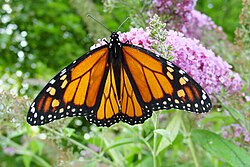
The following is a list of poisonous animals, which are animals that passively deliver toxins (called poison) to their victims upon contact such as through inhalation, absorption through the skin, or after being ingested. [1] [2] They are often distinguished from venomous animals, which actively inject their toxins (called venom) into their victims through a venom apparatus such as fangs or a stinger. [1] [2] The only difference between poisonous animals and venomous animals is how they deliver the toxins. [3] [2] This list deals exclusively with poisonous animals.

